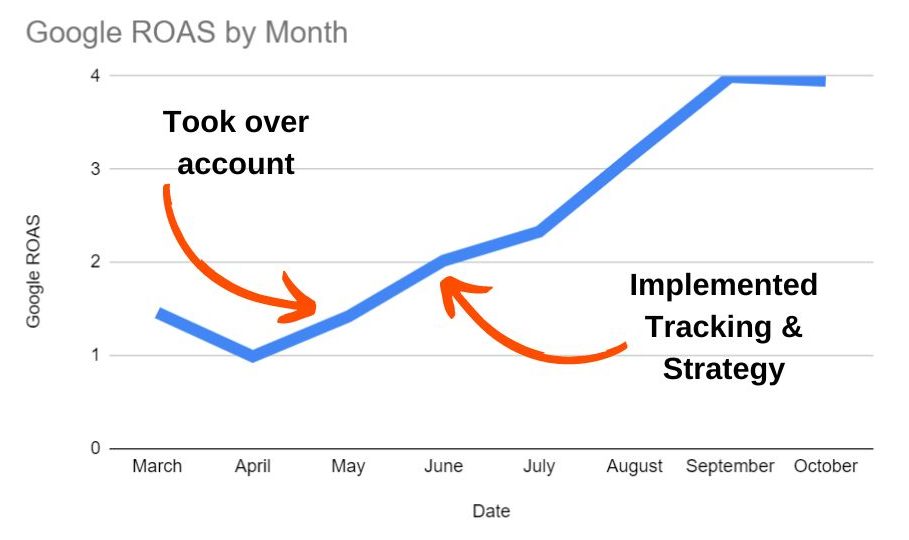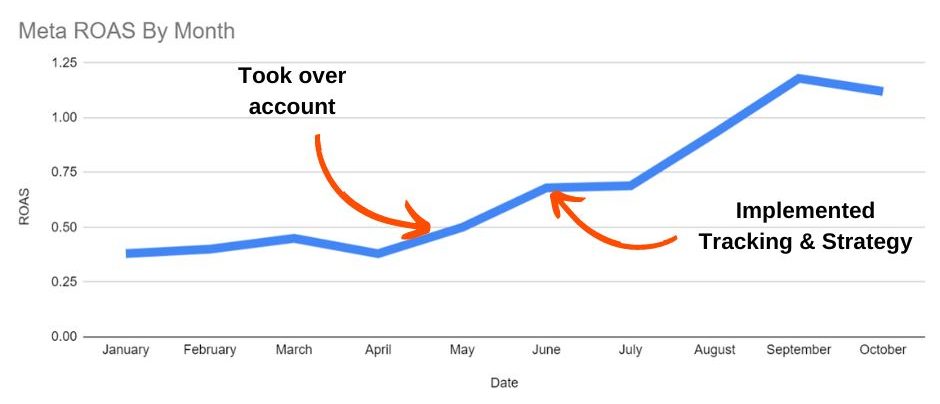When revenue isn’t always profit, optimize for the money makers
How I increased ROAS by 300% in the pet product industry and drove conversions that mattered to the bottom line
DocuPet had unique problems that made it a challenge for anyone running their digital marketing campaigns:
- They had a custom website (as opposed to easier to set up solutions like Shopify or WooCommerce). Tracking implementation required internal developer time.
- Customer journeys would often span 2 or more domains.
- Even after being set up properly, DocuPet had two distinct revenue streams (Licensing and DocuPet products) within the same user flow and they only made a direct profit from one of them.
All of this leads to DocuPet struggling with successful to have successful paid ad campaigns.
I was brought in as their in house Director of Digital Marketing to help them find success for their paid ad efforts.
After consolidating Google Analytics 4 across all North American subdomains, auditing Meta pixel tracking including fine tuning server side implementation, and making sure Google Tag Manager was set up to continue the same session across subdomains, we were able to focus on the revenue making opportunities.
What you measure matters
Meta ads manager was optimized to achieve high ROAS based on any purchase revenue being tracked in the platform. It looked like campaigns did well, but it was tracking types of revenue that didn’t matter.
As mentioned above, a user would go through a user flow where they’d buy a pet municipal license and then have the opportunity to purchase additional products like tags and toys. Paid campaigns needed to focus on the latter where profit was made. Previous agencies would optimize for purchase conversions or total purchase revenue and try to account for product ROAS after, but they were missing opportunity by not letting the platform optimize for the correct revenue stream.
Solution: Facebook Custom Conversions and Focused Revenue Optimization
Facebook allows you to create custom conversions around your product categories and optimize for those conversion types.
We not only focused on the revenue that needed to be tracked, we also factored some COGS (Costs of Goods and Services) such as the portion (20%) of purchase going to animal shelters to get a better understanding of our actual return on ad spend and optimizing for our real target in the ad platform. We set up something similar in Google Ads as well.
I built multichannel campaigns on Facebook, Instagram, and Google search to focus just on sales of DocuPet’s tag product. With that optimization goal set, we took advantage of dynamic creative features of Meta ads and Google Ads to optimize for the most effective content as quickly as possible.
Finally, we’d confirm winners of our tests by setting up UTMs in the landing page URLs to see what was driving quality user visits and sales.

Results
The company saw a 300% increase in ROAS on Meta ads platform and Google Ads. These campaigns went from losing money for the past year to generating a positive impact on the bottom line for the first time ever.
Furthermore, the company also saw a significant increase in the earnings per online user that wasn’t reflected in the in platform data above. Once this strategy was implemented, there was a strong correlation between average weekly ad spend and average per user earnings (r value of 0.87).

Whether your company is running a complex operation that requires a custom tracking and optimizations strategy or a more straightforward digital strategy, Wilson Digital can help. Contact us to get a free digital marketing consultation and start addressing your company’s challenges today.

